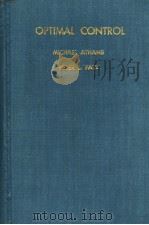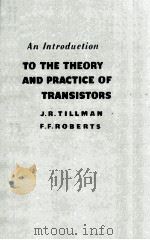《Chemical Process Control An Introduction to Theory and Practice》
| 作者 | 编者 |
|---|---|
| 出版 | PRENTICE-HALL,INC |
| 参考页数 | 696 |
| 出版时间 | 1984(求助前请核对) 目录预览 |
| ISBN号 | 0131286293 — 求助条款 |
| PDF编号 | 811475818(仅供预览,未存储实际文件) |
| 求助格式 | 扫描PDF(若分多册发行,每次仅能受理1册) |
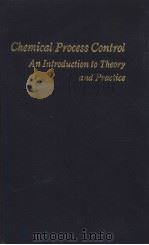
Part ⅠThe Control of a Chemical Process:Its Characteristics and Associated Problems1
1.Incentives for Chemical Process Control2
1.1 Suppress the Influence of External Disturbances4
1.2 Ensure the Stability of a Process7
1.3 Optimize the Performance of a Chemical Process10
2.Design Aspects of a Process Control System12
2.1 Classification of the Variables in a Chemical Process12
2.2 Design Elements of a Control System14
2.3 Control Aspects of a Complete Chemical Plant25
3.Hardware for a Process Control System28
3.1 Hardware Elements of a Control System28
3.2 Use of Digital Computers in Process Control30
Concluding Remarks on Part Ⅰ33
Things to Think About for Part Ⅰ33
References for Part Ⅰ35
Problems for Part Ⅰ36
Part ⅡModeling the Dynamic and Static Behavior of Chemical Processes43
4.Development of a Mathematical Model45
4.1 Why Do We Need Mathematical Modeling for Process Control?46
4.2 State Variables and State Equations for a Chemical Process48
4.3 Additional Elements of the Mathematical Models55
4.4 Dead Time58
4.5 Additional Examples of Mathematical Modeling59
4.6 Modeling Difficulties74
Things to Think About78
5.Modeling Considerations for Control Purposes80
5.1 The Input-Output Model81
5.2 Degrees of Freedom86
5.3 Degrees of Freedom and Process Controllers89
5.4 Formulating the Scope of Modeling for Frocess Control93
Things to Think About97
References for Part Ⅱ98
Problems for Part Ⅱ100
Part ⅢAnalysis of the Dynamic Behavior of Chemical Processes111
6.Computer Simulation and the Linearization of Nonlinear Systems113
6.1 Computer Simulation of Process Dynamics114
6.2 Linearization of Systems with One Variable116
6.3 Deviation Variables119
6.4 Linearization of Systems with Many Variables121
Things to Think About126
7.Laplace Transforms128
7.1 Definition of the Laplace Transform128
7.2 Laplace Transforms of Some Basic Functions130
7.3 Laplace Transforms of Derivatives139
7.4 Laplace Transforms of Integrals139
7.5 Final-V?lue Theorem140
7.6 Initial-Value Theorem141
Things to Think About141
8.Solution of Linear Differential Equations Using Laplace Transforms143
8.1 A Characteristic Example and the Solution Procedure143
8.2 Inversion of Laplace Transforms.Heaviside Expansion145
8.3 Examples on the Solution of Linear Differential Equations Using Laplace Transforms152
Things to Think About157
9.Transfer Functions and the Input-Output Models159
9.1 Transfer Function of a Process with a Single Output159
9.2 Transfer Function Matrix of a Process with Multiple Outputs163
9.3 Poles and Zeros of a Transfer Function167
9.4 Qualitative Analysis of the Response of a System168
Things to Think About172
10.Dynamic Behavior of First-Order Systems173
10.1 What Is a First-Order System?173
10.2 Processes Modeled as First-Order Systems174
10.3 Dynamic Response of a Pure Capacitive Process178
10.4 Dynamic Response of a First-Order Lag System179
10.5 First-Order Systems with Variable Time Constant and Gain183
Things to Think About184
11.Dynamic Behavior of Second-Order Systems186
11.1 What Is a Second-Order System?186
11.2 Dynamic Response of a Second-Order System187
11.3 Multicapacity Processes as Second-Order Systems193
11.4 Inherently Second-Order Processes201
11.5 Second-Order Systems Caused by the Presence of Controllers201
Things to Think About204
Appendix 11A Examples of Physical Systems with Inherent Second-Order Dynamics205
12.Dynamic Behavior of Higher-Order Systems212
12.1 N Capacities in Series212
12.2 Dynamic Systems with Dead Time214
12.3 Dynamic Systems with Inverse Response216
Things to Think About220
References for Part Ⅲ220
Problems for Part Ⅲ223
Part ⅣAnalysis and Design of Feedback Control Systems239
13.Introduction to Feedback Control241
13.1 Concept of Feedback Control241
13.2 Types of Feedback Controllers245
13.3 Measuring Devices(Sensors)248
13.4 Transmission Lines253
13.5 Final Control Elements253
Things to Think About256
14.Dynamic Behavior of Feedback-Controlled Processes258
14.1 Block Diagram and the Closed-Loop Response258
14.2 Effect of Proportional Control on the Response of a Controlled Process265
14.3 Effect of Integral Control Action273
14.4 Effect of Derivative Control Action276
14.5 Effect of Composite Control Actions277
Things to Think About279
15.Stability Analysis of Feedback Systems281
15.1 Notion of Stability281
15.2 The Characteristic Equation285
15.3 Routh-Hurwitz Criterion for Stability287
15.4 Root-Locus Analysis290
Things to Think About295
16.Design of Feedback Controllers297
16.1 Outline of the Design Problems297
16.2 Simple Performance Criteria299
16.3 Time-Integral Performance Criteria302
16.4 Select the Type of Feedback Controller306
16.5 Controller Tuning310
Things to Think About316
17.Frequency Response Analysis of Linear Processes317
17.1 Response of a First-Order System to a Sinusoidal Input317
17.2 Frequency Response Characteristics of a General Linear System321
17.3 Bode Diagrams326
17.4 Nyquist Plots338
Things to Think About341
18.Design of Feedback Control Systems Using Frequency Response Techniques344
18.1 Bode Stability Criterion344
18.2 Gain and Phase Margins349
18.3 Ziegler-Nichols Tuning Technique352
18.4 Nyquist Stability Criterion355
Things to Think About358
References for Part Ⅳ360
Problems for Part Ⅳ363
Part ⅤAnalysis and Design of Advanced Control Systems381
19.Feedback Control of Systems with Large Dead Time or Inverse Response383
19.1 Processes with Large Dead Time383
19.2 Dead Time Compensation385
19.3 Control of Systems with Inverse Response390
Things to Think About393
20.Control Systems with Multiple Loops394
20.1 Cascade Control395
20.2 Selective Control Systems402
20.3 Split-Range Control407
Things to Think About409
21.Feedforward and Ratio Control411
21.1 Logic of Feedforward Control411
21.2 Problem of Designing Feedforward Controllers414
21.3 Practical Aspects on the Design of Feedforward Controllers420
21.4 Feedforward-Feedback Control423
21.5 Ratio Control427
Things to Think About429
22.Adaptive and Inferential Control Systems431
22.1 Adaptive Control431
22.2 Inferential Control438
Things to Think About443
References for Part Ⅴ444
Problems for Part Ⅴ447
Part ⅥDesign of Control Systems for Multivariable Processes:Introduction to Plant Control459
23.Synthesis of Alternative Control Configurations for Multiple-Input,Multiple-Output Processes461
23.1 Design Questions for MIMO Control Systems461
23.2 Degrees of Freedom and the Number of Controlled and Manipulated Variables462
23.3 Generation ofAlternative Loop Configurations467
23.4 Extensions to Systems with Interacting Units469
Things to Think About484
24.Interaction and Decoupling of Control Loops486
24.1 Interaction of Control Loops487
24.2 Relative-Gain Array and the Selection of Loops494
24.3 Design of Noninteracting Control Loops504
Things to Think About508
25.Design of Control Systems for Complete Plants510
25.1 Process Design and Process Control510
25.2 Hydrodealkylation of Toluene Plant to Produce Benzene:A Case Study516
25.3 Material Balance Control for the Hydrodealkylation Plant519
25.4 Product Quality Control for the Hydrodealkylation Plant524
25.5 Some Comments on the Control Design for Complete Plants529
Things to Think About534
References for Part Ⅵ537
Problems for Part Ⅵ540
Part ⅦProcess Control Using Digital Computers549
26.Digital Computer Control Loops551
26.1 The Digital Computer552
26.2 Computer-Process Interface for Data Acquisition and Control557
26.3 Computer Control Loops561
26.4 New Control Design Problems566
Things to Think About568
27.From Continuous to Discrete-Time Systems570
27.1 Sampling Continuous Signals571
27.2 Reconstruction of Continuous Signals from Their Discrete-Time Values576
27.3 Conversion of Continuous to Discrete-Time Models581
Things to Think About587
28.z-Transforms589
28.1 Definition of z-Transforms589
28.2 z-Transforms of Some Basic Functions591
28.3 Properties of z-Transforms595
28.4 Inversion of z-Transforms599
Things to Think About604
Appendix 28A:The Modified z-Transform606
29.Discrete-Time Response of Dynamic Systems608
29.1 Response of Discrete Dynamic Systems609
29.2 Discrete-Time Analysis of Continuous Systems.The Pulse Transfer Function613
29.3 Discrete-Time Analysis of Closed-Loop Systems621
29.4 Stability Analysis of Discrete-Time Systems626
Things to Think About631
30.Design of Digital Feedback Controllers634
30.1 Digital Approximation of Classical Controllers635
30.2 Effect of Sampling638
30.3 A Different Class of Digital Controllers640
30.4 “Ringing” and the Placement of Poles647
30.5 Design of Optimal Regulatory Control Systems650
Things to Think About654
31.Process Identification and Adaptive Control656
31.1 Process Identification657
31.2 Process Identification and Adaptive Control662
Things to Think About667
References for Part Ⅶ670
Problems for Part Ⅶ674
Index685
1984《Chemical Process Control An Introduction to Theory and Practice》由于是年代较久的资料都绝版了,几乎不可能购买到实物。如果大家为了学习确实需要,可向博主求助其电子版PDF文件(由 1984 PRENTICE-HALL,INC 出版的版本) 。对合法合规的求助,我会当即受理并将下载地址发送给你。
高度相关资料
-

- EDTA TITRATIONS AN INTRODUCTION TO THE THEORY AND PRACTICE
- 1959 PERGAMON PRESS
-

- THE NEW RIGHT IN BRITAIN AN INTRODUCTION TO THEORY AND PRACTICE
- 1994 PLUTO PRESS
-

- Introduction to mathematical control theory
- 1975 Clarendon Press
-
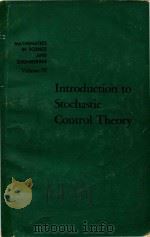
- Introduction to stochastic control theory
- 1970 Academic Press
-
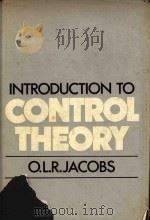
- Introduction to control theory
- 1974 Clarendon Press
-

- OPTIMAL CONTROL AN INTRODUCTION TO THE THEORY WITH APPLICATIONS
- 1991 CLARENDON PRESS.XOFORD
-
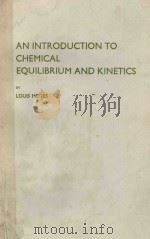
- AN INTRODUCTION TO CHEMICAL EQUILIBRIUM AND KINETICS
- 1981 PERGAMON PRESS
-
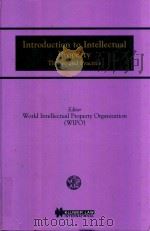
- Introduction to Intellectual Property Theory and Practice
- 1998 Kluwer Law International
-
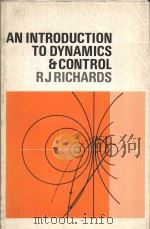
- AN INTRODUCTION TO DYNAMICS AND CONTROL
- 1979 LONGMAN LONDON AND NEW YORK
-
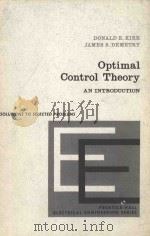
- OPTIMAL CONTROL THEORY AN INTRODUCTION
- 1971 PRENTICE-HALL ELECTRICAL ENGINEERING SERIES
-
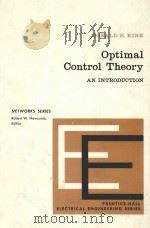
- OPTIMAL CONTROL THEORY AN INTRODUCTION
- 1970 PRENTICE-HALL INC.
-
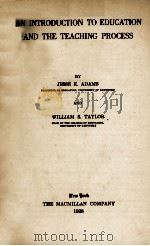
- AN INTRODUCTION TO EDUCATION AND THE TEACHING PROCESS
- 1938 NEW YORK THE MACMILLAN COMPANY
提示:百度云已更名为百度网盘(百度盘),天翼云盘、微盘下载地址……暂未提供。➥ PDF文字可复制化或转WORD
